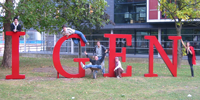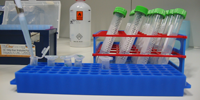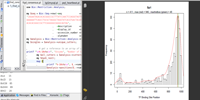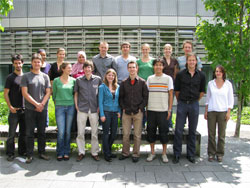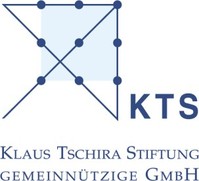Team:Heidelberg
From 2009.igem.org
(→iGem Heidelberg Mission 2009: Spybricks) |
(→iGem Heidelberg Mission 2009: Spybricks) |
||
| Line 20: | Line 20: | ||
[http://igem.bioquant.uni-heidelberg.de/mediawiki/index.php/Team Please read more] | [http://igem.bioquant.uni-heidelberg.de/mediawiki/index.php/Team Please read more] | ||
|style="border:3px solid #FFF;"| | |style="border:3px solid #FFF;"| | ||
| + | [[Image:HD09_iGEM_Project.png|center|150 px|border|Project]] | ||
'''Project'''<br> | '''Project'''<br> | ||
Mammalian synthetic biology has huge potential, but it is in need of new standards and of systematic construction of comprehensive part libraries. Promoters are the fundamental elements of every synthetic biological system. We have developed and successfully applied two novel, in silico guided methods for the rational construction of synthetic promoters which respond only to predefined transcription factors. | Mammalian synthetic biology has huge potential, but it is in need of new standards and of systematic construction of comprehensive part libraries. Promoters are the fundamental elements of every synthetic biological system. We have developed and successfully applied two novel, in silico guided methods for the rational construction of synthetic promoters which respond only to predefined transcription factors. | ||
| Line 25: | Line 26: | ||
[http://igem.bioquant.uni-heidelberg.de/mediawiki/index.php/Team Please read more] | [http://igem.bioquant.uni-heidelberg.de/mediawiki/index.php/Team Please read more] | ||
|style="border:3px solid #FFF;"| | |style="border:3px solid #FFF;"| | ||
| + | [[Image:HD09_iGEM_Modeling.png|center|150 px|border|Modeling]] | ||
'''The Heartbeat Database''' <br> | '''The Heartbeat Database''' <br> | ||
As one of the most important approaches to synthezise synthetic promotors we developed a database that predicts the position of conserved promotor binding sequences. We identified conserved sequences ourselves, analyzed the data and coded an easy to use interface that ise available for public use. | As one of the most important approaches to synthezise synthetic promotors we developed a database that predicts the position of conserved promotor binding sequences. We identified conserved sequences ourselves, analyzed the data and coded an easy to use interface that ise available for public use. | ||
Revision as of 14:46, 8 October 2009
iGem Heidelberg Mission 2009: SpybricksEstablishing new standards for iGEM, the Heidelberg 2009 team will be concerned with developing ways for measuring promoters in mammalian cells, a default chassis and a first evaluation of the recently postulated BioBrick beta proposal 2 (Tom Knight). Considering the importance of controlling gene expression, our team's work will focus on natural and synthetic mammalian promoters. Our vision is to provide the synthetic biology community with a methodical library of such promoters (with different output strength and sensitivity to different regulatory proteins) and a model which can provide guidance for the development of further synthetic promoters. Our efforts will therefore, from the very beginning, equally entail bioinformatics and wet lab work.
|
Our TeamThis year 13 students are part of the Heidelberg iGEM Team.
News28 Aug. 2009, Generous Donation by Klaus Tschira Foundation
The Klaus Tschira Foundation GmbH is a non-profit organization and supports research in informatics, the natural sciences, and mathematics; at the same time it promotes a public understanding in these sciences. With this combination the Klaus Tschira foundation is our ideal partner in this competition.
25 Aug. 2009, LANGE + PFLANZ becomes Gold Sponsor
http://igem.bioquant.uni-heidelberg.de/mediawiki/index.php/News See more |
 "
"
